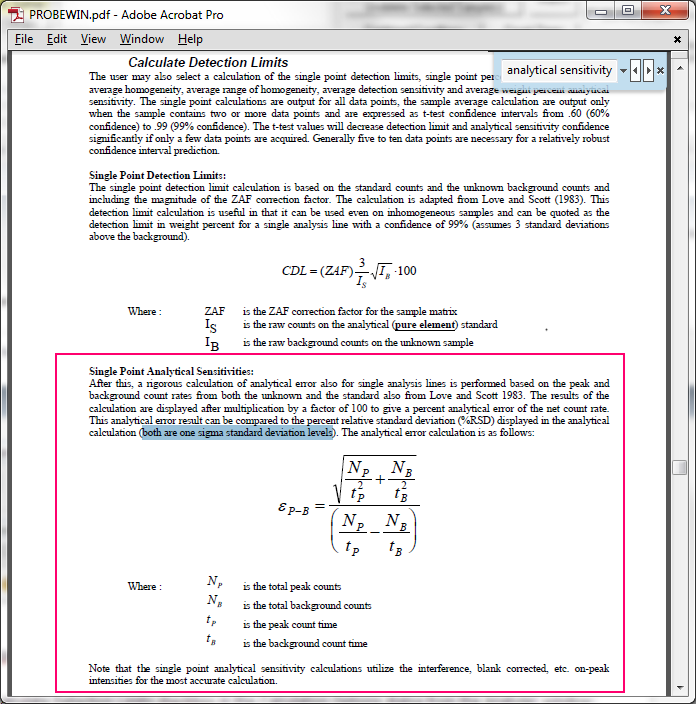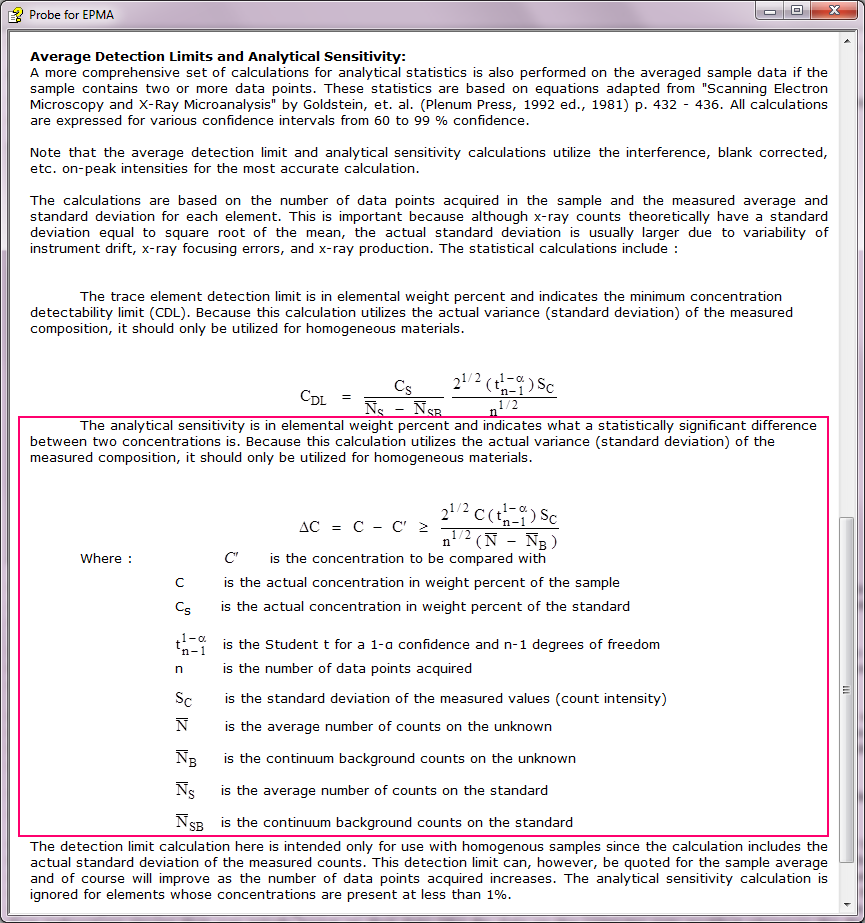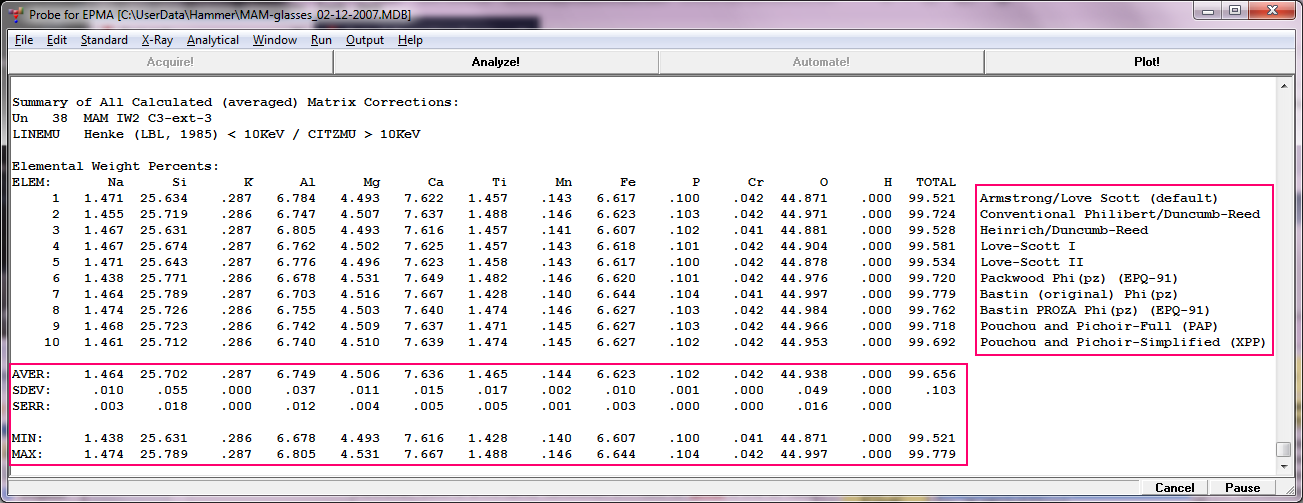Hi Phil,
I wouldn't say you are "mis-representing" WDS uncertainty, because it all depends on what one means by "uncertainty". Are you including the effect of changes in barometric pressure in your WDS uncertainty calculations?

Probably not... But I have to give Nicholas credit for trying to include many, many sources of uncertainty in his calculations!
Probe for EPMA includes two calculations for analytical uncertainty which I assume you saw are both taken from Goldstein et al. So I take no credit (or blame!) for them, but they have been found to be "useful".
The first uncertainty calculation method (for single data points only) simply ratios the P-B uncertainty (one sigma) of the standard and unknown counts rates and yes, the expression doesn't include other uncertainties, such as the matrix correction uncertainty (or barometric pressure uncertainty for that matter!). This expression is documented here in the PFE reference manual:

However, the second uncertainty calculation in Probe for EPMA is the so called "t-test" analytical uncertainty calculation for multiple data points which is shown here:

is often considered a more "predictive" calculation because it depends not only on the number of data points acquired, but also includes the *measured* variance of the sample (which would therefore include uncertainties such as spectrometer reproducibility). So in theory this t-test method does provide some representation for other varying experimental parameters (though not necessarily variations in barometric pressure!).

As for estimating the "uncertainty" of the various matrix corrections, I usually utilize the Use All Matrix Corrections checkbox in the Analyze! window of Probe for EPMA. This then calculates all 10 matrix corrections and reports the average and variance of these physical models as seen here:

This accuracy uncertainty is certainly not the only way to characterize the matrix correction uncertainty, but it's one option. In any case, I will defer to Nicholas on these topics as he has thought a lot more on these questions than I have.